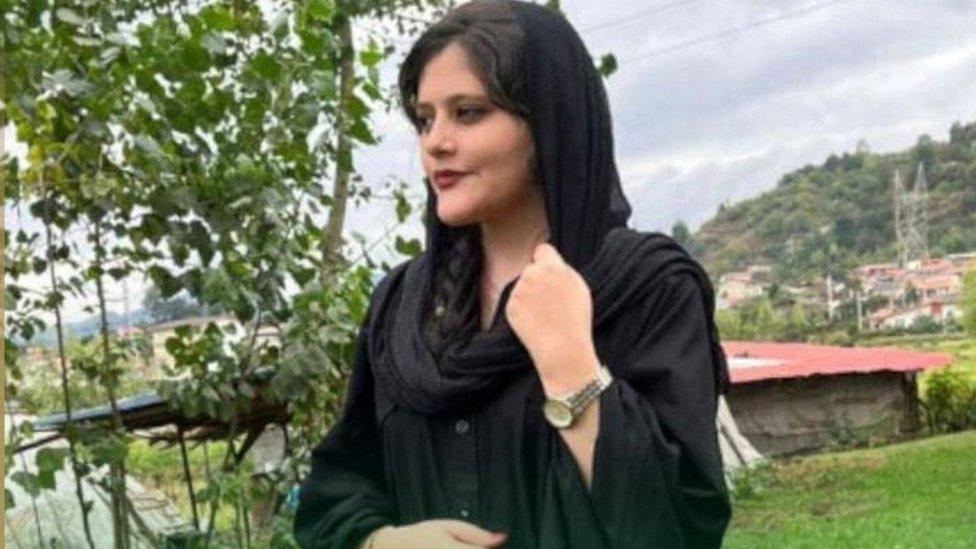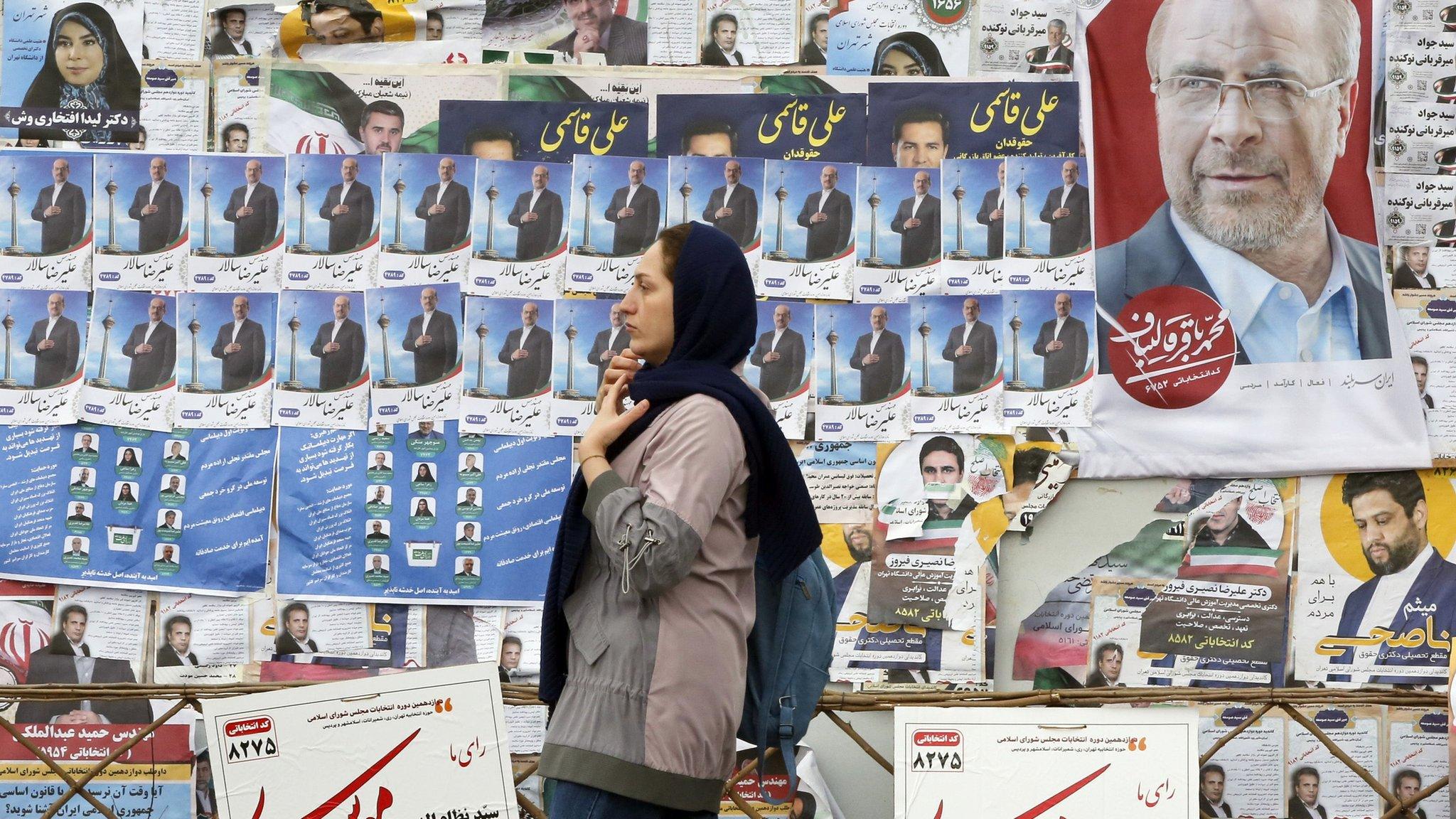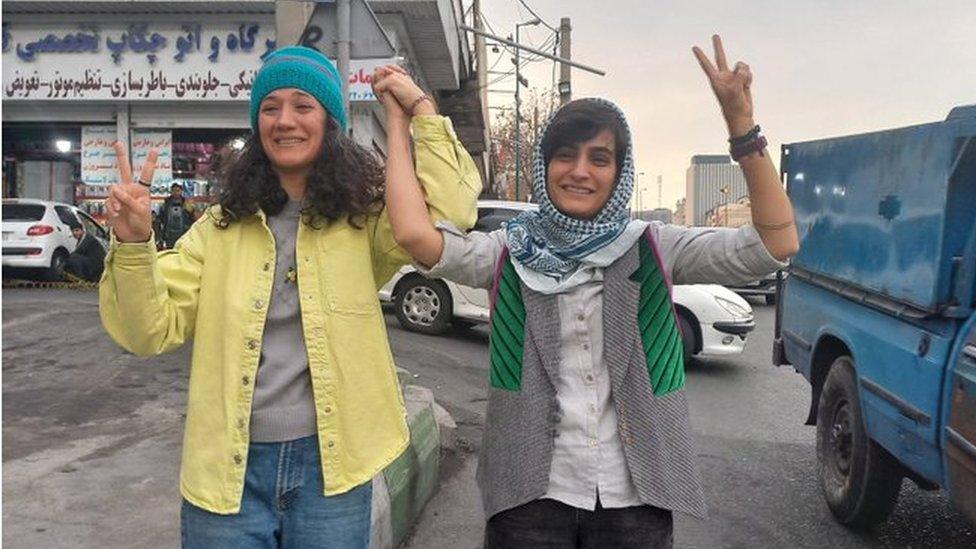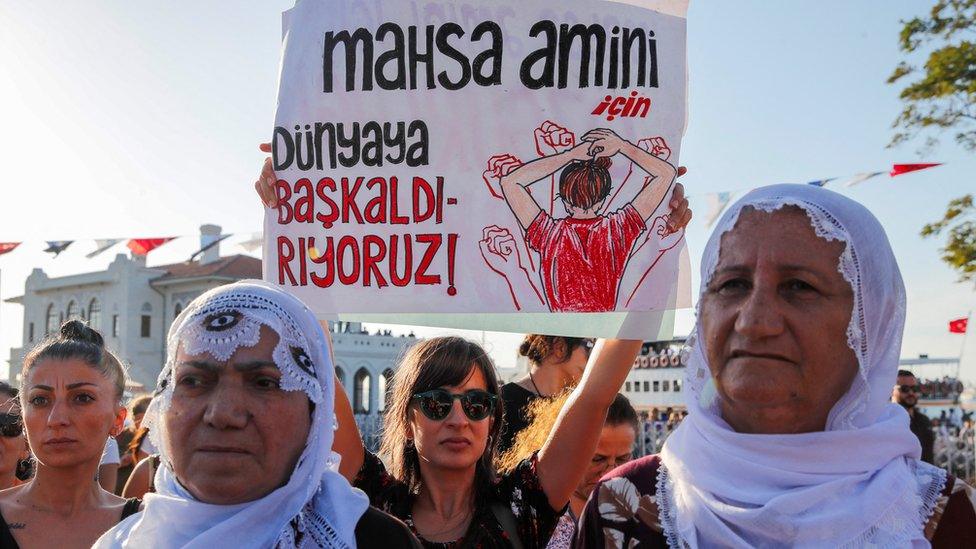Mahsa Amini: Iran responsible for 'physical violence' leading to death, UN says
- Published

'Physical violence' led to Mahsa Amini's death, UN report
Iran is responsible for the "physical violence" that led to Mahsa Amini's death, a UN fact-finding mission says.
The 22-year-old died in police custody in 2022 after being arrested for allegedly violating rules requiring women to wear the headscarf.
Her death sparked protests unlike any the country had seen before.
The UN mission also found "disproportionate use of lethal force" by security forces against protesters.
The crackdown killed more than 500 people, rights groups say.
There was no immediate comment on the report from Iran, which has consistently denied being responsible for Ms Amini's death.
The UN report says Mahsa Amini was brought to Iran's Vozara detention facility to undergo a "re-education class", but collapsed after 26 minutes and was taken to a hospital 30 minutes later.
At the time, a UN human rights expert said evidence showed she had died "as a result of beatings". The authorities rejected this and Iran's state coroner attributed her death to pre-existing medical conditions.
Now the fact-finding mission says it has "established the existence of evidence of trauma to Ms Amini's body, inflicted while in the custody of the morality police". This along with the "patterns of violence by the morality police" satisfied the mission that Ms Amini was subjected to physical violence that led to her death.
Protests broke out after Ms Amini's funeral in the western city of Saqqez, when women ripped off their hijab in solidarity. Demonstrations spread across Iran, with women setting their headscarves on fire, and protesters calling for the overthrow of Iran's governing system.
The UN fact finding mission said the authorities used shotguns, assault rifles and submachine guns against demonstrators, "thereby committing unlawful and extrajudicial killings."
It also found that protesters were often shot intentionally in the eye.
As these injuries permanently marked the victims, the report claims that in this way they were "branded" as protesters.
Warning: Contains graphic descriptions of rape and sexual violence
Security forces characterised women's demands for equality and non-discrimination as a "willingness to get naked" and "spreading immorality", justifying sexual violence on the basis that this was "the freedom they wanted", the report said.
"Some of the detainees faced sexual violence, including rape, rape with an object, threats of rape, electrocution to the genitalia, forced nudity, groping, touching and other forms of sexual violence," it said.
It cites the case of one female protester who it says was arrested in November 2022 in Kermanshah province, taken to an unofficial detention facility and interrogated before being taken to another room for a "body search".
The report says: "As she was undressing, one male agent and one female agent in a chador [shawl] came into the room and forced her down to the floor and, as they were holding her down, another male agent raped her. Following this, the same agent who had restrained her also raped her."
These methods were used as the security forces played on social and cultural stigma connected to sexual and gender-based violence to spread fear and humiliate, according to the report.
"These acts form part of a widespread and systematic attack directed against the civilian population in Iran, namely against women, girls, boys and men who have demanded freedom, equality, dignity and accountability," said Sara Hossain, chair of the UN inquiry, urging the Iranian authorities to "halt the repression".
Analysts say the UN report is unlikely to have any impact on the policy of the Iranian government dominated by ultra conservatives.
They say a low turnout in elections last week showed Iranians' disenchantment with their country's politics.
Related topics
- Published4 March 2024

- Published14 January 2024

- Published16 September 2023
